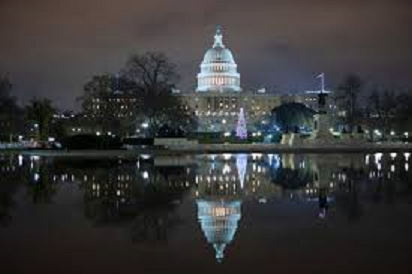COVID-19 Relief – Year-End Legislative Roundup

On Sunday, December 27, 2020, President Trump signed into law the COVID-19 relief package of ~$900 billion, as well as the accompanying ~$1.4 trillion omnibus appropriations bill for fiscal 2021 (October 1, 2020, through September 30, 2021).
On Monday, December 28, 2020, the U.S. House of Representatives approved by a vote of 274 to 134 a separate measure increasing direct stimulus payments ($600 per taxpayer and dependent child under the newly signed legislation) to $2,000 for both taxpayers and dependent children.
On Tuesday, December 29, 2020, the House bill for increased stimulus payments reached the Senate, but was blocked from a vote by Senate Majority Leader Mitch McConnell. Late Tuesday, Senator McConnell surprisingly introduced his own bill increasing stimulus payments to $2,000, but also providing for full repeal of Section 230 of the Communications Decency Act, which makes changes to online-speech rules, and the creation of a new commission to study election fraud.
The direct stimulus payments would start phasing out when individual adjusted gross income exceeds $75,000, when head-of-household income exceeds $112,500, and when income for married couples filing jointly exceeds $150,000. For individuals without children, the payments go to zero when income reaches $87,000; that is $174,000 for married couples. The numbers are generally based on 2019 income.
As for the enacted COVID-19 relief bills, we have discussed many of the more significant provisions heretofore. However, we thought it might be of interest to note that under the newly enacted COVID-19 relief law there are changes regarding the interaction of Paycheck Protection Program (PPP) loans with the Employee Retention Credit (ERC), and to the latter program particularly:
- For PPP Round II loans, $284 billion has been allocated. Loan amounts will be limited to $2 million, and to businesses with 300 or fewer employees (down from 500 in the first round of loans) who demonstrate a drop in income of 25% or greater for any quarter of 2020 as compared with the same quarter in 2019. The loan amount which can be applied for is based on 2.5x average monthly payroll, calculated based on either the 2019 average or the average for the 12 months prior to applying for the loan.
- For restaurants, hotels (and other businesses with NAICS codes starting with 72), you may apply for a loan in the amount of 3.5x average monthly payroll, other provisions as above.
- Eligible payroll costs (wages, employer taxes, employer-paid health insurance and retirement contributions, etc.) must still represent 60% of costs eligible for forgiveness, with 40% allowable for non-payroll-related eligible costs (e.g., rent, mortgage interest, utilities including internet, and other newly eligible expenses under the just-passed relief bill, such as essential supplier costs).
- Additionally, a new, streamlined PPP Loan Forgiveness application and process will be implemented for loans of $150,000 or less.
- If you took an Employee Retention Credit (ERC) and not a PPP loan during Round I in 2020, and feel this was possibly a mistake, then you can pay back the ERC you received and take out a PPP Round I loan, as soon as the application process for Round II PPP loans opens.
- However, under the new rules, you may be eligible to recapture an ERC for wages paid as far back as March 12, 2020, if you did not use them as a qualifying cost basis for a PPP loan.
- An example of how this might work: you received a PPP loan in the amount of $100,000. You had a 24-week period in which to incur eligible forgivable expenses, 60% of which must be payroll-related costs. You paid $200,000 in eligible payroll-related costs during the 24-week period, and had non-payroll-related eligible forgivable expenses of $40,000.
- You need, therefore, only use $60,000 of those $200,000 in payroll-related costs to obtain forgiveness of your $100,000 PPP loan. You are now potentially eligible for an ERC based upon the $140,000 in remaining payroll-related costs.
- Under 2020 ERC rules, to be eligible for the credit you must meet one of two criteria – either 1) your business was shut down by governmental mandate, or 2) your business experienced a 50% or greater decline in revenue quarter-over-quarter, by comparing the 2020 quarter with the same quarter in 2019. If you meet either test, you can receive an IRS tax credit of 50% of the wages paid to an individual employee, up to the first $10,000 in wages paid during the year ($5,000 maximum credit per employee – i.e., if you have a team of 10 people and all fully qualify, you may be eligible for an ERC of $50,000 on your 2020 federal income taxes).
- It is noteworthy that, once you are eligible for an ERC, you remain eligible until the quarter in which your revenues return to at least 80% of revenue compared with the same quarter of 2019.
- Now, for 2021, the ERC gets even more interesting. For the coming year, businesses will only need to demonstrate a 20% drop in revenue compared with the same quarter in the prior year. And, if your revenues for the fourth quarter of 2020 were at least 20% down from the fourth quarter of 2019, you are automatically eligible for an ERC for the first quarter of 2021.
- In addition, the 2021 ERC provides a significant increase in the credit maximum – your credit will be 70% of the first $10,000 (up from 50%) paid in wages per employee per quarter rather than per year, through the ending of the credit, which has been extended in the new legislation from December 31, 2020 to June 30, 2021.
- This means that you could potentially receive an ERC of $14,000 per eligible employee for the year 2021, up from $5,000 per employee for 2020.
- Both the SBA and the IRS will need to weigh in with guidance on how this will work going forward; however, this will be of potentially significant benefit to business owners (and their employees).
We are glad President Trump signed the COVID-19 relief bill on December 27, 2020, and we are sure many, many individuals and families will have a happier New Year for it. It will be interesting to see how the issue of the increased (or not) stimulus checks is resolved.
We will monitor the progress of the competing increased direct payment measures, as well as SBA and IRS guidance. The SBA has 10 days from the date the bill was signed into law to provide guidance as to the process and procedures pertaining to the PPP Round II loans.
Stay tuned!
If you have questions on the latest stimulus package and how it might impact you and/or your business, please click here to email me directly.
Until next Wednesday – Happy New Year!
Peace,
Eric
